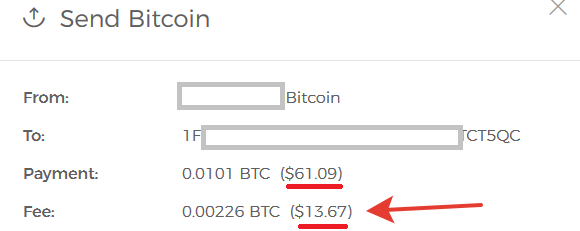
However, Custody’s unique challenges forced us to rethink the approach and come up with a different design. The Coinbase Consumer platform has been successfully using CPFP to accelerate withdrawals for quite some time and you can learn more about it in the blog post.

This approach is commonly known as Child-Pays-For-Parent (CPFP). For example, if one (child) transaction spends an output of another (parent) transaction, the child transaction can pay fees for both - miners have no choice but to include the parent transaction if they want to collect the excess fees from the child transaction. One interesting property of Bitcoin’s UTXO model is that transactions can be chained together creating a “bundle” that miners evaluate as a whole with respect to the fees. Unfortunately, Cold Storage security requirements make it difficult to estimate the fee right before the broadcast. One obvious solution is to calculate transaction fees immediately before broadcasting it to the Bitcoin network - knowing the current network conditions enables us to predict an optimal fee. Historical transaction fee distribution (credit: )Īt Coinbase Custody we recognize this obstacle and continuously innovate to give our customers an edge when they need it the most. The chart below shows how volatile Bitcoin fees can be. During those times it was not uncommon for transactions to pay up to 100x regular fees in order to be confirmed without delays. If you transacted Bitcoin in 2017–2018 you may remember multi-hour and sometimes multi-day delays during peaks of price volatility and other important market events.


Such a process can repeat multiple times, causing transaction to become stuck indefinitely until the network congestion clears up. When the size of all pending transactions exceeds the maximum block size limit of 1MB miners prioritize transactions with higher fees for inclusion while kicking low-fee transactions down the next block. A block is produced every 10 minutes on average. Our users frequently perform high-value, time-sensitive withdrawals and expect transactions to be confirmed on the blockchain without delays and have clean predictable amounts arriving at the destination (and with no fees deducted from the amount).įortunately, Bitcoin’s advanced technique called Child-Pays-For-Parent (CPFP) allows us to satisfy all of the above requirements: zero-fee transactions with reliable confirmation times, all while keeping the fundamental property of secure Cold Storage - using each private key strictly once.Įach transaction submitted to the Bitcoin network includes a fee paid to miners for processing this transaction and including it into a block. While security dominates all Custody technical decisions, customers experience our product day-to-day primarily through the lense of reliability and convenience. After all, security is the main reason why large institutions and high net worth individuals trust Custody to hold on their behalf billions of dollars worth of crypto assets. This approach is taken to the next level at Custody. Coinbase’s security-first culture mandates that all trade-offs be made in favor of security. Being an engineer at Coinbase Custody means solving challenging problems at the intersection of security, reliability, and user experience.


 0 kommentar(er)
0 kommentar(er)
